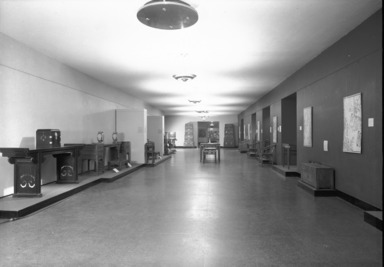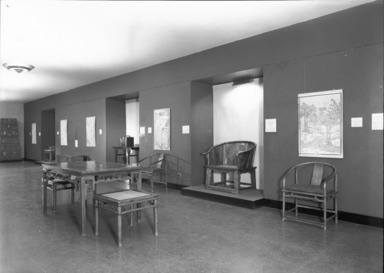

Chinese Household Furniture from the Collection of George Kates, February 21, 1946 through March 31, 1946 (Image: ASI_E1946i001.jpg Brooklyn Museum photograph, 1946)
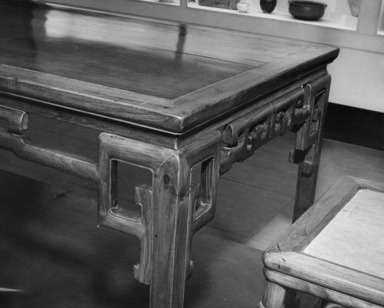
Chinese Household Furniture from the Collection of George Kates, February 21, 1946 through March 31, 1946 (Image: ASI_E1946i002.jpg Brooklyn Museum photograph, 1946)
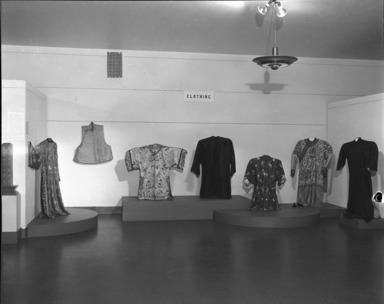
Chinese Household Furniture from the Collection of George Kates, February 21, 1946 through March 31, 1946 (Image: PHO_E1946i024.jpg Brooklyn Museum photograph, 1946)

Chinese Household Furniture from the Collection of George Kates, February 21, 1946 through March 31, 1946 (Image: PHO_E1946i025.jpg Brooklyn Museum photograph, 1946)
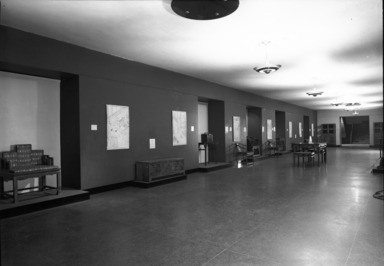
Chinese Household Furniture from the Collection of George Kates, February 21, 1946 through March 31, 1946 (Image: PHO_E1946i026.jpg Brooklyn Museum photograph, 1946)

Chinese Household Furniture from the Collection of George Kates, February 21, 1946 through March 31, 1946 (Image: PHO_E1946i027.jpg Brooklyn Museum photograph, 1946)
Chinese Household Furniture from the Collection of George Kates
-
February 9, 1946
The Brooklyn Museum will open to the public on Thursday, February 21, a special exhibition of Chinese furniture. This exhibition is one of specimens gathered by Mr. George N. Kates during a prolonged residence in Peking.
Perhaps the last of all the varied manifestations of Chinese art to reach the appreciation of the Western public is Chinese furniture. To date there has been no single exhibition in American museums wholly devoted to it. Except for examples of lacquered furniture--not that made from hard woods--publication in any language, even including Chinese, has been negligible.
Mr. Kates says that it is difficult to account for this lacuna except by realizing the general circumstances under which our knowledge of Chinese art has come to us. In modern times Westerners first touched almost only the south of the country, a great many hundred of miles from the seat of the court, which had been for some five centuries far to the north in Peking.
Contact, further, Mr. Kates goes on to say, was largely made in the first instance by traders, who had no great interest in subtleties of taste. They wanted “curios,” to bring back from a land where they existed in fabulous variety. This gave us in clipper-ship days, much of what is still treasured in American houses, such objects as Canton china or lacquer sewing-tables. These were gifts which could be stowed away in a sailing ship and brought home.
Even when relations became more mature, says Mr. Kates, the furnishings of the imperial court were considered by all means the most valuable and interesting, although in one sense these also were not typical of the best taste. For the virtuosity of certain palace pieces, “tribute wares” many of them, resulted from the presentation of furniture specially designed to exhibit a maximum of technical perfection--not for use but for display, not for daily living but for chambers of audience.
Alongside this, down through the centuries and comparatively little noticed, Mr. Kates explains, has been a vast range of normal furniture, the kind used in houses of dignity, to serve the needs of an educated and literary population. The revelation of this sober, at times almost startlingly plain, world of practical design--full of valuable hints and implications for our life here in the West today---has come in our own generation, after our own recovery from the bad taste of the Victorian age, with its interest in “carved teak,” imported from the Orient.
The present exhibition represents a much more normal range of pieces, in polished hardwoods for the most part. Although many of them had their counterparts in the more private apartments of the Forbidden City, Mr. Kates points out that they are representative on the whole of what, before the old tradition waned, would have been found in private houses where means were ample and taste was good. They take us into an atmosphere of dignity and sobriety; and it is against this setting rather than the more gaudy one hitherto presented to the Western public that we must reconstruct our picture of China during the Ming (1368-1644) and Ch’ing (1644-1911) dynasties.
To help in the difficult problems of dating, woodcuts in contemporary books are shown as a part of the exhibition. All the illustrations shown are from the Spencer Collection in the New York Public Library, and it is through the kindness of their Curator, Mr. Karl Kup, that they have been lent to the Brooklyn Museum for this show.
Here in clear line are representations of pieces similar to those on display, the books themselves definitely dated, and also of the Ming (1368-1644) and Ch’ing (1644-1911) periods. The enlargements of these woodcuts, exhibited beside analogous pieces, ought to help in the gradual formation of better standards of chronological appraisal than we have had hitherto.
DESCRIPTION OF A FEW INDIVIDUAL PIECES
(If text is quoted verbatim, credit should be given to Mr. George N. Kates)
(1) SMALL CUPBOARD, camphorwood and burl
l7 ¼” high, 39-3/8” long, 13 ½” deep
This cupboard would go admirably under or between windows in a Western setting, and without cluttering a room give valuable drawer and closet space. Its height would bring it under the trim of a domestic window-sill; its depth while not excessive gives it satisfying solidity.
It presents a combination of drawers above a small two-doored closet. How nearly “modern” it is in feeling may be judged from the fact that there is not a single moulding in the whole design. The drawer fronts and the panels of the little closet below are of burl, while the framing, all in one plane, is of grained wood. This arrangement, combined with its generous brass hardware, completely avoids monotony.
(2) CUPBOARD, of a wood called “nan mu”
18-5/8” high, 54-3/4” long, 16-7/8” deep
This cupboard is longer, but also of the same general proportions as the one described above. Its top would serve as an ideal place on which to set any of the many objects, in modern living, that are best taken care of at this height. It uses storage space in the same efficient way, also with drawers and a central cupboard. Brass hardware makes the piece intimate and attractive; and a flat wooden cut-out on each drawer panel is its only ornament. To achieve a simple effect with sparing decoration, and then to stop, is an art in which the Chinese excel.
(3) GAME TABLE, of “rosewood”
height 32-½”, top 35-5/8”x28-3/8”
This is another piece that can be rated very high in its efficient utilization of space. Seen from the outside it is light and simple, with sturdy, absolutely plain legs. The top lifts off, and inside is a removable chess and checker board, as well as, no less than twelve separate drawers and recesses to hold counters for these games and for backgammon, the playing board for which makes a sunken recess at the bottom of the piece.
(4) HOOP-BACKED CHAIR, of “rosewood”
seat 25” x 18-½”, height of seat 18-½”
total height 34”
This chair is a complete refutation of the prevalent idea that Chinese chairs are uncomfortable. Not a single piece of the design is non-functional. The cross section of the hoop that forms both arms and outward-curving back, all in one continuous piece, is a simple round. Adaptation in tubular metal would be an easy matter; and here fabrication in quantity could produce a model that would fit equally well into surroundings either old or new.
(5) LOW STOOL, of “rosewood”
23-¼” square, 20-3/4” high
The strong dowel legs of this piece are absolutely plain. Its horizontal members could also be made of tubular metal. The height is perfectly adaptable either for use as a comfortable seat, or else as a little portable table. The comfort of living with plenty of horizontal space within easy reach, for every kind of casual use, is enhanced by the use of such pieces.
(6) K’ANG TABLE, of “blackwood”
height 12-½”, top 22-½” x 35”
This oblong, low table -- “k’ang” table to the Chinese, coffee table for us here in the West -- is another good example of sturdy, absolutely plain construction with not a single moulding. The reinforcing members with mitred joints, strengthen it in fact as well as merely to the eye.
Brooklyn Museum Archives. Records of the Department of Public Information. Press releases, 1942 - 1946. 01-03/1946, 016-9.
View Original
